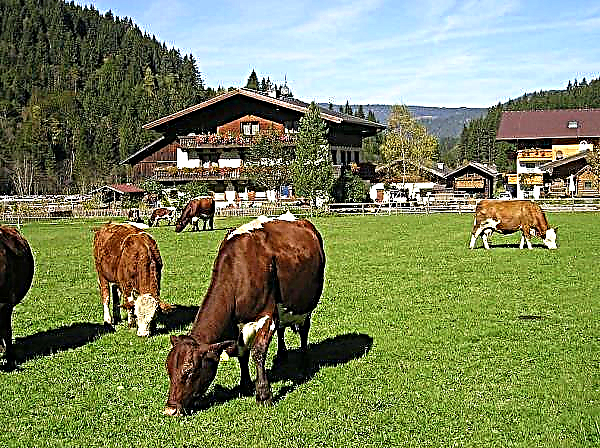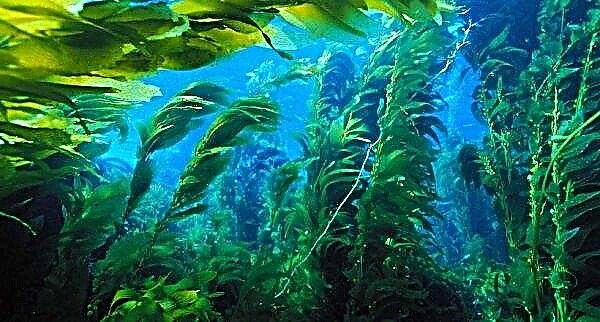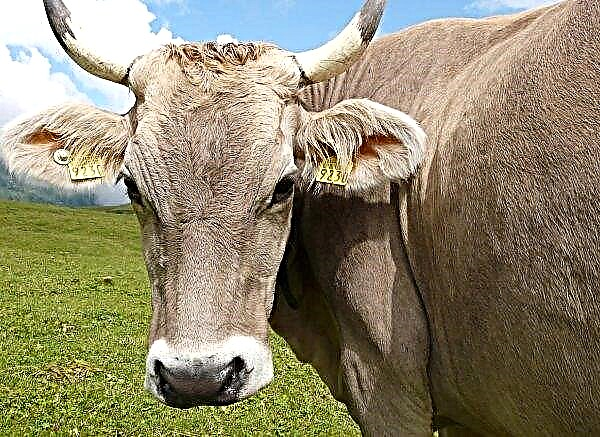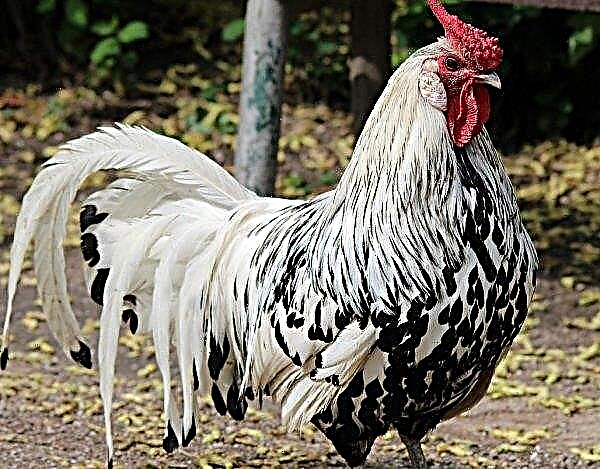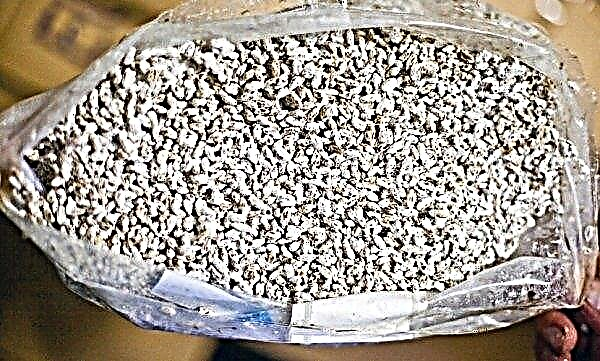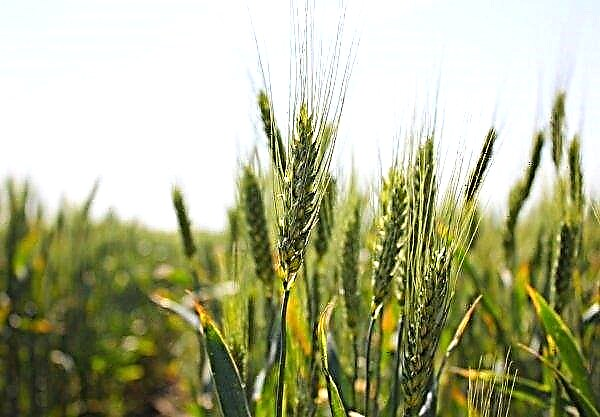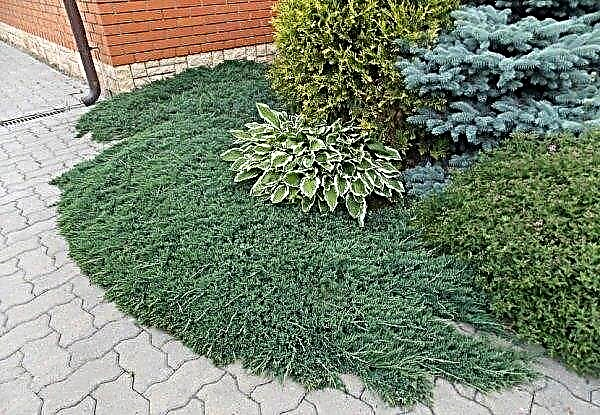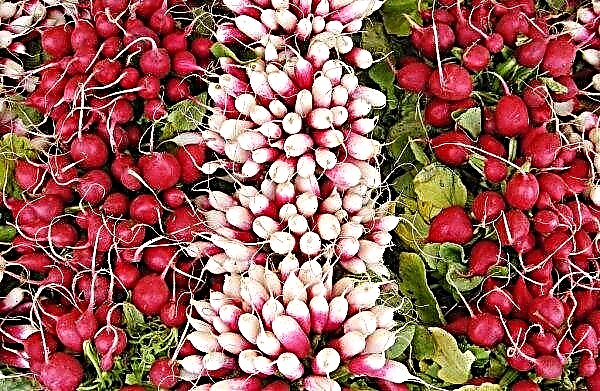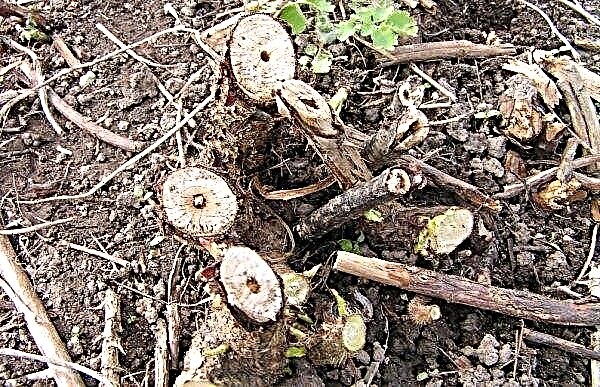Growing greens in winter is not only an opportunity to diversify your diet and constantly renew the vitamin supply of relatives. Such an occupation has long been able to become a profitable business for many gardeners. But, for this case, you need a greenhouse. What greenhouse is needed for growing herbs, and what are the features of growing green vitamins, read on.
Features of the greenhouse for growing herbs
In order to collect a good harvest of fresh herbs in winter, you need to build a well-insulated greenhouse. The construction must necessarily stand on a solid foundation, with a depth of 50-100 cm. In severe regions, it is recommended that the main wall be laid out from cinder block or beams.
Important! The north side of the building, it is advisable to join any other room, in order to protect from piercing winds.
The best winter greenhouse coating is polycarbonate. You can, of course, use glass or film as a shelter, but they will not retain heat well. As for his roof, it should be pitched. This will protect the roof from accumulation of snow and possible damage. The base of the frame is made of metal, which must be subjected to anti-corrosion treatment.
The main thing that the owner of a winter greenhouse should take care of is lighting and heating. Plants need to receive light for at least twelve hours, so there will not be enough winter daylight. You will have to take care of additional lighting. For such a procedure, you will need to stock up with fluorescent, or special phytolamps.
In an unheated greenhouse, tender greens will not grow. Therefore, it is worth taking care of the heating of the building. You can conduct central heating by installing water batteries, or you can install in the construction of a stove-potbelly stove, or bonfires. It is also advisable to use infrared heaters.
Benefits
- The advantages of growing green crops in greenhouse conditions include:
- The ability to grow plants of different species at the same time.
- Growing safety: in closed conditions, access of pests to plants is minimal.
- Harvesting year-round.
- An opportunity to get a crop of even the most capricious and demanding varieties of greenery.
- A variety of growing methods: plants can be placed on shelves or resorted to hydroponic or aeroponic methods. This saves valuable space.
- Ease of care for crops.
Did you know? For the first time, greenhouse constructions appeared in ancient Rome. They were considered ordinary carts, which in the daytime were rolled out to sunny areas, and at night they were placed in a specially equipped warm room.
Disadvantages
- The few disadvantages of growing greens in greenhouse conditions include:
- The high price of a properly equipped building.
- High costs for heating, watering, lighting and repairing the structure in winter.
- Regular soil replacement. If crops are grown in a greenhouse all year round, then every 3-4 months it is necessary to change the substrate.
- In closed conditions, you will have to make much more fertilizer in the soil.
Many gardeners are primarily concerned with the question of how to plant and which types of greenery in the greenhouse in winter. Winter planting is no different from spring or summer. As regards the types of crops, it is effective to cultivate varieties in greenhouse conditions whose growing season does not last long, and which also have good taste. If plants will be grown for industrial purposes, then it is worth focusing on their market demand. Experienced gardeners recommend growing dill, parsley, lettuce, green onions, mint, cilantro under greenhouse conditions.
Did you know? The Dutch set greenhouses on geysers. Therefore, the constant satellites of greenhouses in the country are pools filled with hot water.
Types of Greenhouses
In winter, greenery can be cultivated in different types of greenhouse constructions. Read more about each, read on.
Mini greenhouse
This is a great option for gardeners who grow green mass in the winter for themselves. Such a structure is installed in an apartment or other residential building, and it looks like a large box under glass, inside of which there are small boxes filled with a substrate. The seeds from which future crops will grow will be sown in these boxes.
In order not to burden yourself with the preparation of a large box, you can use the old aquarium.
This variant of the greenhouse design is recommended for gardeners who want to feast on vitamin greens in the winter, but it is not suitable for those who are engaged in this business for industrial purposes.
Greenhouse
The greenhouse is a simplified analogue of the greenhouse. Its frame is made of thick metal arcs. The sheathing is film. The greenhouse is heated by the rays of the sun. Heat is also emitted during the decay of manure and compost, which fertilize the soil.
The greenhouse is best suited for growing crops in warm weather.

Winter
A winter greenhouse is a well-heated (internal temperature + 16 ... + 18ºС), illuminated (light is supplied to crops from 12 to 18 hours a day) and a warm building. Among its characteristics is increased strength, since the structure must withstand both strong wind gusts and the mass of snow that can accumulate on it.
As a covering of a winter greenhouse, cellular polycarbonate is most often used. If the building is sheathed with film, then it must be given in two layers. An additional insulation will be foil thermal film, which is worth sheathing the greenhouse on the north and west sides.
Important! Mandatory requirement for winter greenhouse construction — gable roof and high ridge, which will eliminate the problem of snow accumulation. The roof can also be made arched.
The winter version of the greenhouse is great for growing greens, both for yourself and for industrial purposes. Moreover, thanks to the design features, and depending on the height of the crops, racks can be made inside, even three-tiered.
Greenhouse thermos
It got its name due to the fact that it has excellent thermal insulation functions. The peculiarity of such a building is that it is dug into the ground. Ideally, when 2.5 m of the structure is deepened in the ground. Such an idea not only helps to keep warm, but also allows you to save on materials for building walls, since wall structures will be either low or not at all.
But one cannot hope that the greenhouse will heat itself in winter. It is necessary to organize additional heating. The best option is to supply the building with a closed heating system, that is, water. This type of greenhouse building is ideal for growing fresh green crops in winter, but it is worth remembering that such a pleasure is not cheap: for the construction of a greenhouse on 100 m² of area, you will have to pay from 200 to 300 thousand rubles.
This type of greenhouse building is ideal for growing fresh green crops in winter, but it is worth remembering that such a pleasure is not cheap: for the construction of a greenhouse on 100 m² of area, you will have to pay from 200 to 300 thousand rubles.Video: DIY greenhouse thermos
How to build a greenhouse for greens with your own hands at home for beginners?
Everyone who has at least the smallest builder skills can make a greenhouse for greens on their own. More about the procedure.
Preparatory work
Preparatory work on the construction of a greenhouse for growing green crops consists of the following steps:
- Choosing a place to build. It should be flat and preferably protected from the wind.
- Greenhouse Sizing.
- Preparation of drawings.
- Material selection. A long period of operation is distinguished by a design whose frame is made of metal. But, nevertheless, it is more environmentally friendly to use wood. Experienced gardeners note that in wooden buildings, cultures grow much more efficiently and better.
- Tool stock: hacksaw for cutting materials, hammer, tape measure, screwdriver, knife, scissors, circular saw, drill.
- Soil preparation. Ideal is a substrate, which includes garden soil, river sand, peat and sawdust in the same proportions. The soil should be loose, well-drained, have excellent water and air permeability, so it is advisable to dilute it with expanded clay, fine gravel, broken brick. Coal from wood will also be appropriate.
- Choosing greens for planting. Planting plants can be both seed and seedling method. Given the fact that the greenhouse is quite warm, most gardeners resort to the seed method, which saves time and effort. Vitamin cultures for growing in a greenhouse (parsley, dill, lettuce, onions, etc.) have approximately the same vegetative period. Therefore, they are sown at approximately the same time.
To determine the time of sowing, you need to know when there will be a peak in crop sales in the market. So, greens are in greatest demand during the New Year and Christmas holidays. If you take into account the fact that it takes at least 40 days to grow ready-for-sale greens, then you need to sow crops in the fall (early to mid-November). You can sow green vitamins for your own needs at any time convenient for you.Important! Those for whom this occupation has become a source of income should take care of conveyor growing, that is, fresh supplies of crops must be constant: some have gathered, others have grown.

Greenhouse construction
The greenhouse construction process consists of the following steps:
- Clearing and preparing the place. In the selected area, you need to remove the topsoil and cover the ground with a heating tape, pour peat-soil substrate onto it. If the greenhouse is heated by water, then pipes are laid along its perimeter.
- Foundation fill. To do this, a trench (0.5–1 m depth) is dug around the perimeter of the future structure, which will be flooded with a mortar of sand and cement. The foundation can be of two types: columnar (its pillars will be the components of the frame, to which the remaining elements should be attached) and tape (vertical supports will be poured into concrete, placed in pre-prepared holes). The foundation of the winter greenhouse must end with a base - a brick ledge above the ground (~ 0.5 m).
- Frame assemblies. It is not recommended to fasten its parts with nails, this will reduce the strength. It is better to do this with nuts, screws and thermowells.
- Assembled Frame Processing. If it is made of wood, it is treated with antiseptics and varnishes, if it is made of metal, it is treated with anti-corrosion agents.
- Shelters of construction. Polycarbonate is attached to the frame with washers. Two layers of film are nailed with nails.
- Smoke Pipe Roof Installations.
Important! For covering the year-round greenhouse, an exceptionally frost-resistant film is needed.
Harvesting and storage
Greens are not a product with a long shelf life, be it dill, or onion. Therefore, you need to cut it off when necessary. For example, on the same day when the sale is planned. The optimal time for harvesting is a minimum of 40 days after planting. You should also focus on the size of green vitamins: first of all, cut off larger plants. Cut greens (dill, parsley, onions, peppermint) must be collected in bunches (determine the value at your own discretion), if you plan to sell it portionwise. In the case of the sale of kilograms, collecting bundles is not necessary.
Methods of storing greens depend on its type:
- It is recommended to store dill and parsley branches in containers with warm water, where their cut ends will be lowered. Withered and yellowed leaves should be removed immediately, so as not to distort the presentation of the product, and not to provoke its quick spoilage.
- In order to preserve the freshness of lettuce leaves, they must be covered with cling film. Such a measure will help preserve the salad for a week.
- You can just put the dill, parsley, mint, lettuce, cilantro on the bottom shelf of the refrigerator (in the case of large quantities - in a cold place), but the green mass must be dry.
Important! The best way to store fresh green vitamins for your own needs — freezing.
Possible mistakes when growing greens
Novice gardeners can make some mistakes in the process of growing herbs.
The advice of the masters of this matter helps to avoid this:
- Protect your green crops from cold and drafts. In winter, hypothermia is fraught with crop death.
- If you grow greens for industrial purposes, and you do not have regular customers, you must also build special storage facilities for the crop, which was not sold on time.
- Crops need to provide proper care: carefully study their requirements for watering, soil, lighting, humidity, temperature.
- Failure to disinfect the seed before crops can lead to their diseases and damage by pests. Therefore, it is worth spending a little time and disinfecting.
- It is necessary to adhere to the technology of growing crops, so as not to provoke thickening.
- It is important to choose the right location for the varieties of greens in the greenhouse: for example, lettuce does not matter where to grow, dill will feel good in a shaded place, but parsley prefers good lighting.



